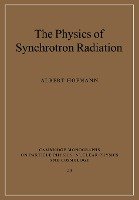This book explains the underlying physics of synchrotron radiation and derives its main properties. It is divided into four parts. The first covers the general case of the electromagnetic fields created by an accelerated relativistic charge. The second part concentrates on the radiation emitted by a charge moving on a circular trajectory. The third looks at undulator radiation, covering plane weak undulators, strong undulators and other more general undulators. The final part deals with applications and investigates the optics of synchrotron radiation dominated by diffraction due to the small opening angle. It also includes a description of electron storage rings as radiation sources and the effect of the emitted radiation on the electron beam. This book provides a valuable reference for scientists and engineers in the field of accelerators, and all users of synchrotron radiation.

